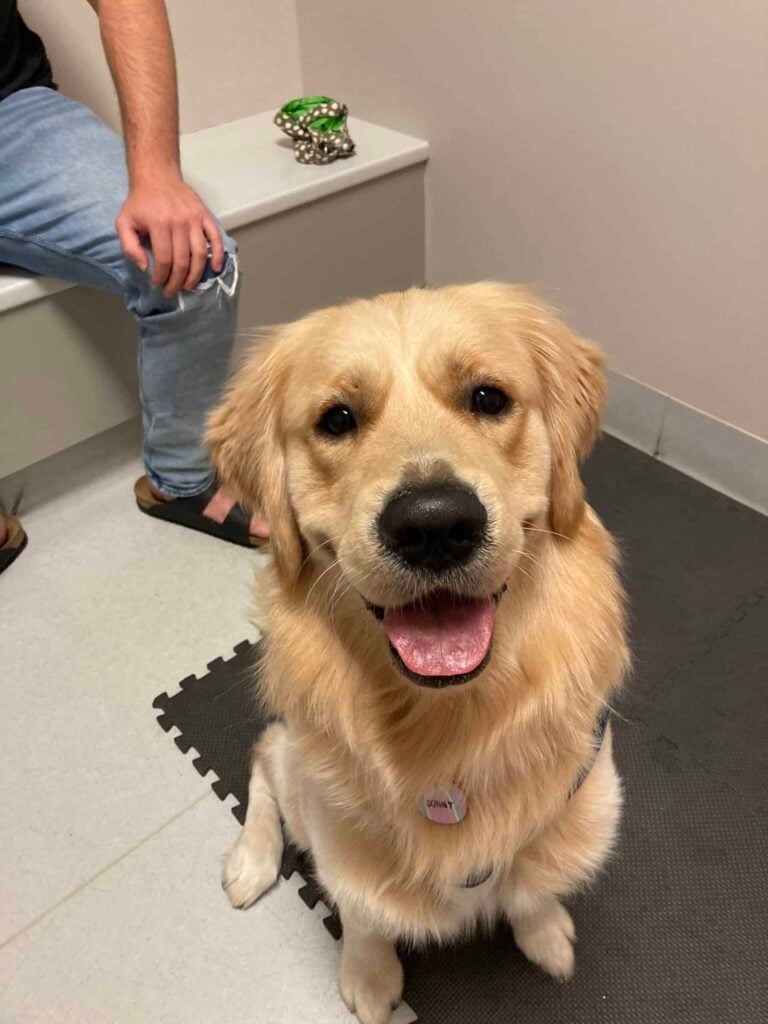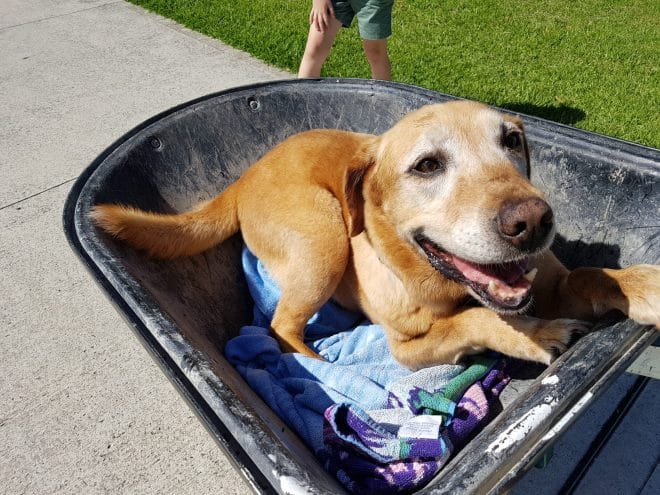Hyperadrenocorticism (Cushings Disease) is a condition that is becoming more commonly diagnosed and managed for dogs in our small animal hospitals in Australia.
Cushing’s disease syndrome is characterised by excess cortisol. This can be due to a hormone secreting tumour in the pituitary gland or due to a tumour in the adrenal gland. The impact of excess cortisol on the body is multiple. Rehabilitation has a role to play with many patients with Cushing’s syndrome, and may be key in managing painful orthopaedic conditions throughout the medical management of Cushing’s disease.
Cushing’s syndrome typically causes increases in drinking, and thus urinating, increased appetite, panting and abdominal enlargement and hair loss, but Cushing’s syndrome also impacts the musculoskeletal system causing muscle weakness. This is best described as a non-inflammatory degenerative myopathy.
Muscle weakness, in combination with lethargy can lead to disuse muscle atrophy and weight gain, which can further negatively impact mobility.
Excess cortisol often masks the pain of osteoarthritis, due to its anti-inflammatory properties. Management of Cushing’s syndrome can lead to a worsening of the clinical signs of osteoarthritic pain, when the level of cortisol in the body is reduced.
Careful management of the Cushing’s disease is necessary before reaching for a routine drug such as NSAIDs commonly used to treat the pain of osteoarthritis. If NSAIDs are used before the Cushing’s disease is controlled, the dog is at risk of developing gastrointestinal ulceration, vomiting, loss of appetite or diarrhoea.
Joint laxity and hyperflexion are also part of Cushing’s syndrome. As such, it is common for dogs with Cushing’s syndrome to suffer from cruciate injuries.
Dogs with Cushing’s syndrome are not great candidates for surgery until their Cushing’s syndrome is well under control. Dogs with Cushing’s syndrome are more prone to surgical infections, delayed wound healing and pulmonary embolisms – or clots to the lungs. These complications would nearly always make the treatment worse than the disease. Medical management and disease stability for 2-3 months is recommended, before undertaking surgical intervention for cruciate or other orthopaedic injuries.
Weight gain is typical for dogs with Cushing’s syndrome, due to their increase and sometimes out of control appetite. If your dog is suffering from Cushing’s syndrome you may feel like your dog is always hungry…and sometimes aggressively hungry. We already know that weight loss is the single most effective pain management for osteoarthritis, but dogs with Cushing’s syndrome present a unique challenge. Appropriate medical management of the Cushing’s disease is a logical first step. Trying to tackle weight loss, in the face of a ravenous appetite only sets you for a frustrating time, and nearly certain failure.
If you want to know more about rehabilitation or if your dog has a diagnosis of Cushing’s disease, feel free to contact us for more information. Please feel free to share this blog with friends on social media if you know someone facing these challenges.





